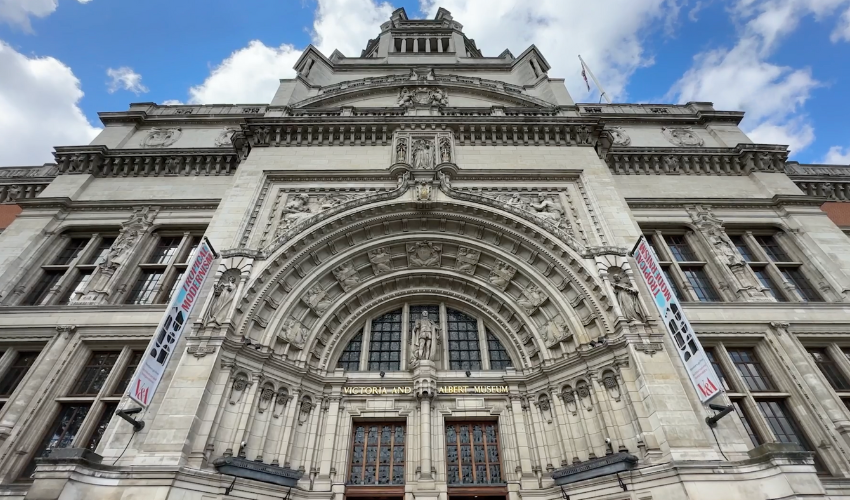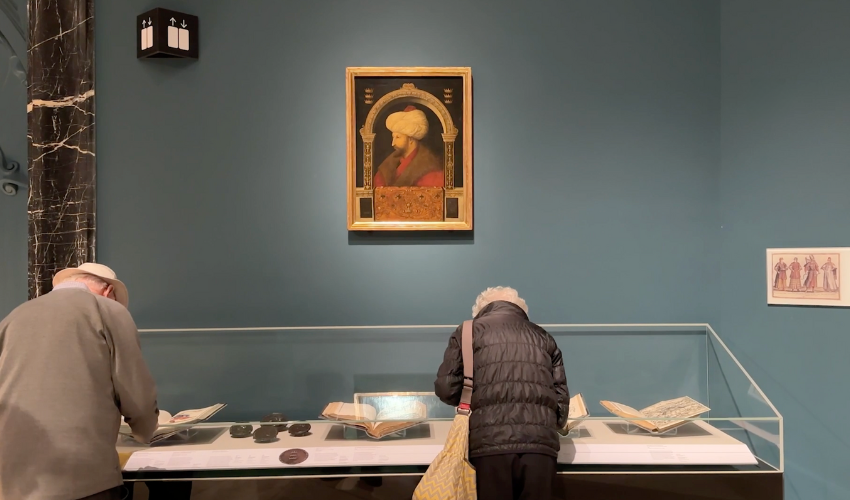Fatih Sultan Mehmet, 'Conqueror of the World', exhibited in London
The Victoria and Albert Museum presents a Renaissance glimpse into the Ottoman Empire through Gentile Bellini’s portrait and medallions of Fatih Sultan Mehmet II, capturing his legacy as 'Conqueror of the World'

The Victoria and Albert Museum is hosting an exhibition featuring the portrait and medallions of Ottoman Sultan Mehmet II, created by the Italian artist Gentile Bellini.
This collection represents a pivotal moment in Renaissance art and reflects the cultural exchange between the Ottoman Empire and Venice in the late 15th century.

The Ottoman Empire commissioned Gentile Bellini in 1479, following a diplomatic agreement with the Venetian Republic, to come to Istanbul. Bellini stayed in Istanbul until 1481, painted Sultan Mehmet II, and produced bronze medallions inspired by the Sultan’s authority and his significant victories.
"The portrait titled 'Sultan Mehmet II' stands out as a modern representation of one of the medieval era’s most significant leaders," said a spokesperson from the museum.
The portrait includes the inscription "Victor Orbis" (Conqueror of the World) and the date, November 25, 1480. It features symbols such as three crowns in the upper corners, denoting the Sultan’s significant conquests: the fall of Constantinople, and the conquests of Konya and the Empire of Trebizond.

The exhibition also includes three medallions depicting Sultan Mehmet II. Bellini crafted one of these, showing the Sultan’s profile on one side and a horseback figure on the other, symbolizing his military prowess.
Another medallion, believed to have been made by Constanza de Ferrera after the Sultan’s death, also shows Mehmet on horseback.
The third medallion, attributed to Bertoldo di Giovanni, displays a young man in a chariot on its reverse side and is thought to have been inspired by Bellini’s portrait.

"These medallions are not just works of art; they signify Sultan Mehmet’s recognition across Europe during that era," the museum spokesperson explained. Bellini’s work, notably, marks a significant cross-cultural artistic endeavor between the Ottoman and Venetian cultures.
The pieces came into the museum’s collection through various collectors. In 1916, the National Gallery included Bellini’s portrait of Mehmet II in its inventory as part of the bequest of Austen Henry Layard, an English diplomat with deep ties to Venice.
The medallions by Giovanni and Ferrera entered the museum as part of George Salting’s bequest, a businessman and art collector who died in 1909.
Source: Newsroom






